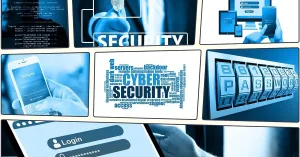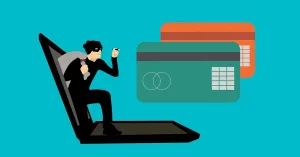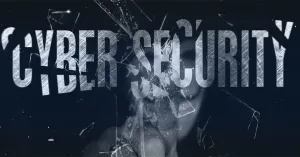In the age of information, the threat of cyberattacks is ever-present. Individuals, businesses, and even government organizations face significant risks of digital intrusion. With cybercriminals constantly developing new techniques, a proactive approach to cybersecurity is of paramount importance.
A robust cybersecurity strategy, based on your hardware, software, and data requirements, will help you stay one step ahead. Not only will cybersecurity practices protect your data if an attack does take place, but they can also give you peace of mind when using your devices in everyday life.
In this article, we’ll be delving into the types of cyberattacks you may come up against, some basic ground rules for cybersecurity that everyone should follow, and the best cybersecurity practices based on your needs as an individual or business owner. Let’s get started…
Types of Cyberattack
The methods cybercriminals use are constantly changing to get the best of cybersecurity practices. However, there are some common cyberattacks you may fall victim to. Understanding these attacks can help you recognize when you’re being targeted, and better select which cybersecurity practices you should implement first. Some common cyberattacks are:
- Phishing
One of the most prevalent cyberattacks is phishing. If you’ve been using the internet for a while, you’ve likely already come up against phishing attempts. By posing as a legitimate entity through emails, texts, phone calls, or websites, cybercriminals seek to trick you into revealing sensitive information like passwords, addresses or financial details.
- Malware
Malware is an umbrella term that is short for malicious software. Cybercriminals seek to trick you into downloading malware through various means. This software is designed to infiltrate and damage your data and devices. Some of the most common forms of malware are spyware, which can allow cybercriminals to see exactly what actions are taking place on your device, and ransomware, which can lock you out of your device until a ransom is paid.
- Man-in-the-Middle
Businesses are the most likely victims of man-in-the-middle attacks. Cybercriminals intercept and alter communication between two parties in the hopes of eavesdropping, manipulating data, and eventually stealing sensitive information. This information can then be used for blackmail or other malicious purposes.
- Denial of Service
Denial of Service, or DoS attacks, aim to disrupt how a website, service, or entire network functions by overwhelming it with traffic from external sources. This can render it useless to users, and cost businesses their profits, time, and resources needed to fix the damage caused by the attack.
- Social Engineering and Insider Attacks
Cyberattacks that utilize social engineering involve manipulating an individual to gain access to their sensitive data and devices. This is much easier to do when an ‘insider’ is involved to assist with emotional manipulation. Insider attacks are also common in the business place, wherein an individual with access to the organization’s network exposes sensitive data to attackers.
- Zero Day Exploits
These cyberattacks seek to exploit insecurities and holes in new software before an update or patch is released. Zero Day Exploits are particularly dangerous for individuals and businesses alike because, without help from developers, there’s not much you can do to protect yourself against them.
- Advanced Persistent Threats
Advanced Persistent Threats or ATPs occur over a long period. Cybercriminals gain access to a business or organization’s network and attempt to remain undetected while they extract data and other sensitive information. ATPs may involve repeated attacks and usually go unnoticed for some time.
General Cybersecurity Tips
Though there are many kinds of cyberattacks, there is also a multitude of cybersecurity practices that can protect every device, from networks at the Pentagon right down to your smartwatch. Here are a few general cybersecurity tips you should always try and adhere to:
- Keep Software Up to Date
When software becomes open to cybersecurity attacks, developers are proactive in releasing updates and patches to close these holes and protect users. Failing to update your software can leave you without the latest security, so update your software as and when upgrades are released.
- Use Strong Passwords
Passwords that use a combination of capital letters, numbers and special characters are best. But sometimes these long strings of random letters can be hard to remember. An encrypted password manager is an easy way to keep track of passwords, and this software will remind you when it’s time for a change. Best practice indicates you should change your passwords every 3-6 months and never use the same password for two or more sites.
- Watch What You Share
You’d be surprised what unassuming information can give cybercriminals the upper hand. Even if you’re not posting sensitive company secrets online, posting about a recent birth, vacation, birthday, wedding, or family issue can give attackers enough information to launch a social engineering attack against you. Keep social media sharing to a minimum to ensure you stay as protected as possible.
- Enable Two-Factor Authentication
Though it’s a little more time-consuming than simply inputting your password and logging in, two-factor authentication (2FA) can weed out a multitude of attacks on your accounts. 2FA requires you to use another secure device or account to confirm a log-in, and this second form of verification adds an often unbeatable layer of security.
- Educate Yourself
Finally, the best cybersecurity practice is to learn the warning signs of cyberattacks and how you can avoid and respond to them. Many of the most basic phishing or social engineering attempts will follow the same pattern, so watching out for misspelled words, suspicious email addresses, urgent requests that play on your emotions, or unsolicited contact, in general, can prevent you from falling victim to low-level cyberattacks.
Cybersecurity Practices for Individuals
Though there is a large overlap between what individuals and businesses should do to protect themselves from cyberattacks, the best practices to secure your devices may vary slightly. Here are a few cybersecurity practices that individuals should prioritize:
Keep Track of Your Devices and Accounts - Though we use our phones and laptops daily, often we have more devices at risk of attack than we think. Any device that is connected to your internet should be secured, including home assistants, games consoles, speakers, gym equipment, security cameras, and even your car. On top of this, you likely have a myriad of accounts on various websites. Keeping track of these and closing those that you no longer use can help you stay secure and, in the event of an attack, determine where the threat originated.
Secure Your Internet Connection - An easy way to ensure your devices are protected when you’re at home is by securing your internet connection. Ensure that your home WiFi network uses WPA2 or WPA3 encryption protocols. As the administrator, you should log into your WiFi settings and change the standard password regularly. Also, disable remote access to these settings to ensure no third parties can change them. Avoid using unsecured or public WiFi and if you must do so, utilize a VPN (Virtual Private Network) to ensure your data remains secure.
Perform Regular Data Backups - If your devices are compromised, you could lose sensitive information and other important data such as your photos and documents. Purchasing a remote hard drive or USB stick remains one of the most secure ways to store your backups. Ensure these devices are encrypted or password protected, and store them in a safe place in your home. If your device does come under attack, you’ll have access to everything you may have lost, and will also be more equipped to deal with the attack as you’ll know exactly what was taken.
Change Your Privacy Settings - It’s good practice to limit the amount of information available about yourself to potential malicious forces online. Many cybercriminals will comb social media to select the easiest and most vulnerable targets and to gain information that can be used to manipulate or blackmail them. Ensure that your settings on social media and your email are adjusted so that your profiles are only visible to those who you approve. You should also use an email that has a built-in spam filter to get rid of any phishing attempts before they appear in your inbox.
Use Secure Sites - When browsing the internet, ensure that every site you visit has an SSL certificate, usually denoted by a lock icon before the hyperlink. This ensures that all of the data sent between your browser and the site’s server is encrypted and protected from third-party access. On top of this, when purchasing from online stores, check that the payment process is PCI-DDS compliant, review their privacy policy, and check for any relevant site seals that confirm the website has been verified to meet security standards by a reputable agency. If you regularly shop online, monitor your financial statements to find any suspect charges early.
Cybersecurity Practices for Businesses
Cybercriminals that target businesses will likely be slightly more sophisticated than those who attack individuals. This is why, as well as those methods listed above, most businesses will need to take extra steps to ensure cybersecurity. Some of these may include:
Employee Training - With so many links in the chain, businesses not only need to ensure the security of their networks but the individual security of every employee and device they use. Regular employee training regarding best practices and internal policies will raise awareness of the importance of cybersecurity and the warning signs they may need to spot. While software updates and password resets will be handled en masse or by an IT team, training employees can help remove the human element that cybercriminals often rely on when targeting businesses.
Incident Response Planning - As well as policies relating to cybersecurity, your business should have a clear and thorough incident response plan in place. This plan will detail the steps that need to be taken to identify a threat, analyze and minimize the damage to data and other sensitive information, and rectify the issue as quickly and with as few resources as possible. You may also like to test these plans if other employees are involved and make changes regularly to keep up with the developing nature of cyberattacks.
Third-Party Security Assessments - It’s not just your intranet and employees you need to worry about when it comes to security breaches. Any company you work with from suppliers to couriers will have access to your business’s sensitive data. This is why it’s good practice to evaluate any company you intend to partner with to make sure their security practices are up to standard. Implementing contractual obligations for security and performing regular security audits are sound ways to do this, and can help identify vulnerabilities and mitigate risks.
Data Encryption and Access Controls - As standard, all data that is stored on your network or transferred through it should be encrypted. A business-wide VPN is a simple way to do this, as well as protocols regarding where and when an employee can use their work devices or access materials. On that note, implementing strong access controls based on what roles employees hold within the company can help avoid unwarranted access. On top of this, user authentication protocols should always be in place.
Network Security Measures - There is no end to the amount of protection you can install and implement on your business’s network. VPNs, as mentioned, are a great choice and should be standard practice alongside firewalls. Cloud data storage and backups can encrypt your business, employee, and customer data, keeping it safe and easily retrievable on an external server should a cyberattack take place through your intranet. Another robust network security measure is intrusion detection software, which highlights any unusual or unauthorized access as and when it takes place.
In Conclusion…
Cyberattacks come in many forms and are constantly evolving. Individuals and businesses can fall victim to a wide range of cyberattacks and suffer large losses of sensitive data and financial information as a result. However, several simple security practices can prevent cyberattacks and protect your devices.
General cybersecurity measures like password protection, up-to-date software, and mindfulness on social media, email, and other sites should be practiced as standard. For individuals, updated privacy settings, strong and secure WiFi and firewalls, and data backups can mitigate the risks of cyberattacks and protect your data should an attack occur.
Businesses have slightly different needs when it comes to cybersecurity. If you’re a business owner, company-wide VPNs, employee training, incident response planning, and third-party security assessments should all be implemented. Data encryption, access controls, and other security measures are crucial to maintaining the integrity of your operations.
Ultimately, educating yourself about the various kinds of cyberattacks, and what you can do to spot and stop them, is an ongoing obligation. Stay informed, adopt a proactive approach, and regularly assess your cybersecurity so you can navigate the digital landscape with confidence.
Sources
- https://www.crowdstrike.com/cybersecurity-101/cyberattacks/most-common-types-of-cyberattacks/
- https://www.cisco.com/c/en_uk/products/security/common-cyberattacks.html
- https://www.lepide.com/blog/the-15-most-common-types-of-cyber-attacks/
- https://www.cisa.gov/topics/cybersecurity-best-practices
- https://www.ekransystem.com/en/blog/best-cyber-security-practices
- https://www.titanfile.com/blog/cyber-security-tips-best-practices/
- https://leaf-it.com/10-ways-prevent-cyber-attacks/
- https://www.moh.gov.sg/licensing-and-regulation/cybersecurity-for-healthcare-providers/common-signs-of-a-cyber-attack
- https://www.cisco.com/c/dam/m/en_ca/business-transformation/pdf/5-ways-to-detect-a-cyber-attack.pdf
- https://southeastcyber.police.uk/cyber-advice-individuals
- https://cipher.com/blog/10-personal-cyber-security-tips-cyberaware/
- https://www.morganstanley.com/articles/personal-cybersecurity
- https://www.kaspersky.com/resource-center/preemptive-safety/small-business-cyber-security





















Add comment